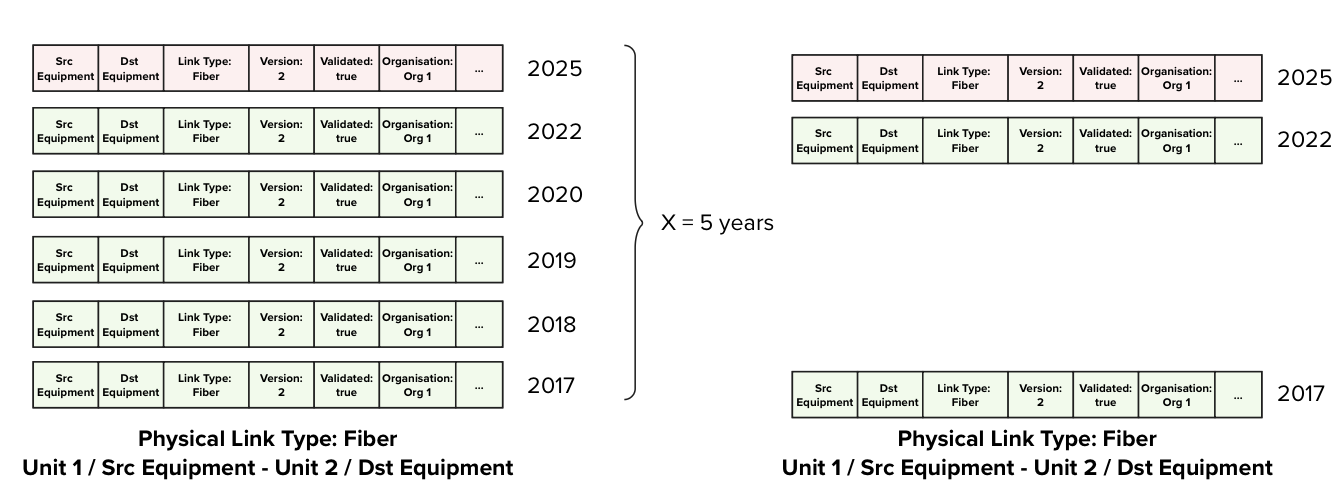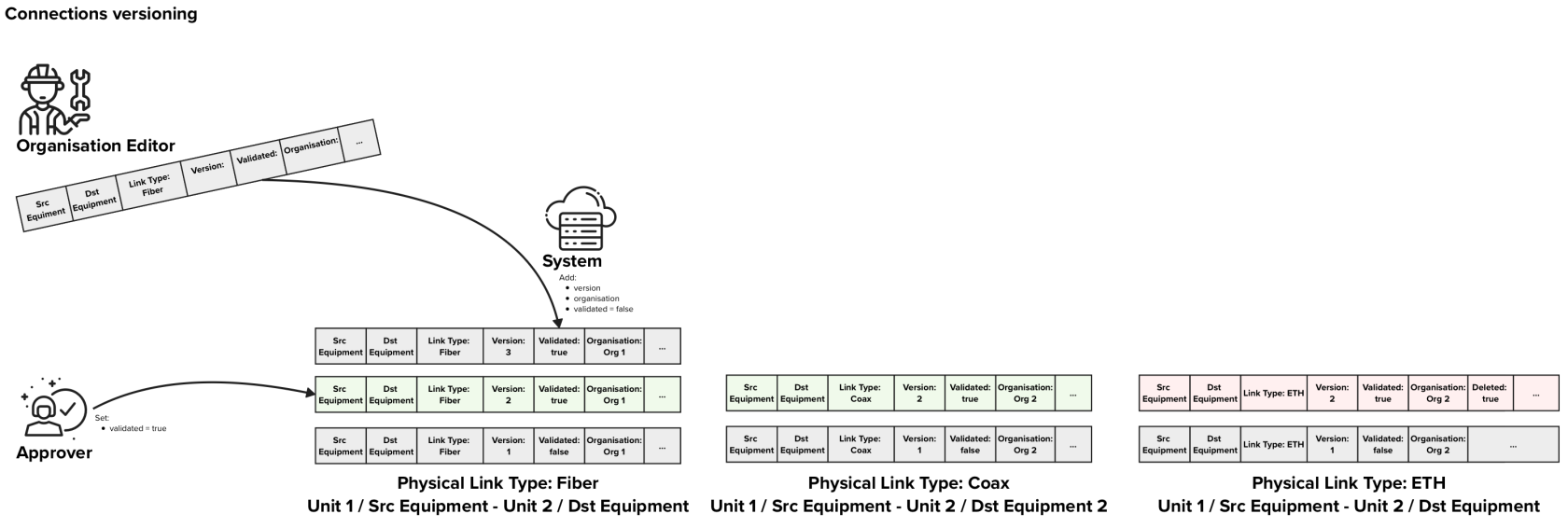6.8. Automatic data approvals and deletion
Keeping multiple versions of the system physical links information in the NRVC has some side effects that allow us to implement automated data approval and data deletion processes that we will describe below.
|
In the figure above each row of data represents on Physical Link data entry in the database. The background colors of the rows represent:
In this example, There are free approved Physical Links, two that indicate that Fiber and Coax are present between two units and one that indicates that ETH was removed. |
Automatic data approvals
Each time an Editor performs an intervention in a given unit / block / site, he should send an update for the concerned physical links, no matter if anything changed or not.
E.g. if three interventions take place for customer A that has a fiber installed in between a socket in his apartment and an NTP, each time the technicians would send an update to the NRVC with the information that fiber is present in between that socket and the given NTP.
If the system receives three consecutive updates for the same source equipment and destination equipment on different days or from different organisations, we can infer that the information is correct and should be automatically approved.
Furthermore if the system receives consecutive update requests that confirm a current state that is already approved, these updates can be automatically approved, and wont need any manual approval.
Soft delete and Automatic data deletion
Soft delete
In chapter 6.5. Data Quality we introduce the notion of “soft delete”. The “soft delete” consists in marking data as deleted which will have following effects:
- The system will consider the data as being deleted and will behave as if the records do not exist
- The data is still kept for auditing purposes and historical analysis
Soft deletes are triggered manually by the Editors and approved by the Approvers and do not involve any automatic process. These is useful to indicate that buildings, blocks, units or equipments have been demolished / decommissioned.
Special case: Physical Links versioning
Physical Links consist a special case since we might have multiple versions of the physical links that contain exactly the same information. Multiple technicians might go to the same sight over a period of a few years and insert the same information into the NRVC.
This is desirable as we want to make sure that the information in the NRVC is still accurate with the reality on site and we want to have these entries as often as possible, to keep the confidence on the data as high as possible.
This will result in scenarios where the same data is populated multiple times over the course of multiple years. The reason to keep these multiple entries for the same physical links are:
- Keep track of the contributions of each Organisation.
- Keep the data up to date and reliable by requiring the updates to be sent as often as possible
- Enable the automatic approval processes as described in this chapter
Automatic deletion of old redundant Physical Link versions

Example 1: Two recent entries and 4 old entries that are identical, are reduced to only one old entry and the two recent ones are left untouched.
After a period of X years, where X will be defined by MyConnectivity based on their needs, the information carried by the redundant records will not carry any added value anymore:
- There is no need to keep track of the number of contributions performed by each Organisation X years ago
- Data older than X years is not considered as reliable as recent data since the situation on site might have changed in the meantime
Therefore an automatic process will be implemented that will delete redundant records that do not carry addition relavant information. Only records the datasets that record a change in the vertical cabling are kept to keep track of dates when these changes occurred. All other records do not carry any additional relevant information and can be deleted.
Example 2: Four old entries. The are identical and one denotes that Fibre has been decommissioned, only two records are kept, the earliest that recorded the presence of Fibre, and the record that marks the date when Fibre was decommissioned.



No comments to display
No comments to display